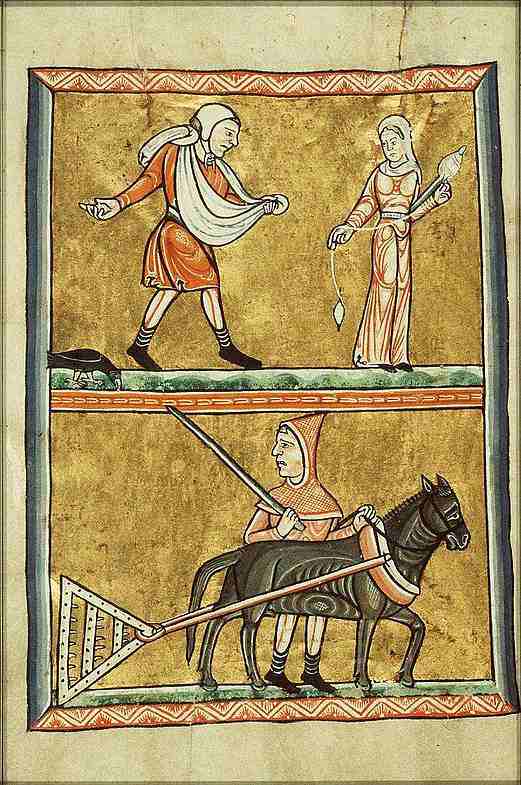 Norwegian scientists have hypothesized that Rudolph’s red nose is probably the result of a parasitic infection of his respiratory system. |
|
The Germans made the first artificial Christmas trees out of dyed goose feathers |
|
 All the gifts in the Twelve Days of Christmas would equal 364 gifts. |
|
 The “true love” mentioned in the song “Twelve Days of Christmas” does not refer to a romantic couple, but the Catholic Church’s code for God. The person who receives the gifts represents someone who has accepted that code. For example, the “partridge in a pear tree” represents Christ. The “two turtledoves” represent the Old and New Testaments. |
|
 Most of Santa’s reindeer have male-sounding names, such as Blitzen, Comet, and Cupid. However, male reindeers shed their antlers around Christmas, so the reindeer pulling Santa’s sleigh are likely not male, but female or castrati. |
|
 In A.D. 350, Pope Julius I, bishop of Rome, proclaimed December 25 the official celebration date for the birthday of Christ. |
|
 According to the Guinness world records, the tallest Christmas tree ever cut was a 221-foot Douglas fir that was displayed in 1950 at the Northgate Shopping Center in Seattle, Washington. |
|
 The traditional three colours of Christmas are green, red, and gold. Green has long been a symbol of life and rebirth; red symbolizes the blood of Christ, and gold represents light as well as wealth and royalty. |
|
 The world’s largest Christmas stocking measured 106 feet and 9 inches (32.56 m) long and 49 feet and 1 inch (14.97 m) wide. It weighed as much as five reindeer and held almost 1,000 presents. It was made by the Children’s Society in London on December 14, 2007. |
|
 Christmas trees usually grow for about 15 years before they are sold. |
|
Many European countries believed that spirits, both good and evil, were active during the Twelve Days of Christmas. These spirits eventually evolved into Santa’s elves, especially under the influence of Clement C. Moore’s The Night Before Christmas (1779-1863) and illustrated by Thomas Nast (1840-1902). |
|
 Bolivians celebrate Misa del Gallo or “Mass of the Rooster” on Christmas Eve. Some people bring roosters to the midnight mass, a gesture that symbolizes the belief that a rooster was the first animal to announce the birth of Jesus. |
|
 In Poland, spiders or spider webs are common Christmas trees decorations because according to legend, a spider wove a blanket for Baby Jesus. In fact, Polish people consider spiders to be symbols of goodness and prosperity at Christmas. |
|
 Mistletoe (Viscum album) is from the Anglo-Saxon word misteltan, which means “little dung twig” because the plant spreads though bird droppings. Ancient peoples, such as the Druids, considered mistletoe sacred because it remains green and bears fruit during the winter when all other plants appear to die. Druids would cut the plant with golden sickles and never let it touch the ground. They thought it had the power to cure infertility and nervous diseases and to ward off evil. | |
 Evergreens (from the Old English wordaefie meaning “always” and gowan meaning “to grow”) have been symbols of eternal life and rebirth since ancient times. The pagan use and worship of evergreen boughs and trees has evolved into the Christianized Christmas tree. |
|
 Because they viewed Christmas as a decadent Catholic holiday, the Puritans in America banned all Christmas celebrations from 1659-1681 with a penalty of five shillings for each offence. Some Puritan leaders condemned those who favoured Christmas as enemies of the Christian religion. |
|
 Because of their pagan associations, both the holly (associated with the masculine principle) and the ivy (the feminine) and other green boughs in home decoration were banned by the sixth-century Christian Council of Braga. |
|
 The poinsettia is native to Mexico and was cultivated by the Aztecs, who called the plant Cuetlaxochitl (“flower which wilts”). For the Aztecs, the plant’s brilliant red color symbolized purity, and they often used it medicinally to reduce fever. Contrary to popular belief, the poinsettia is not poisonous, but holly berries are. |
|
 Christmas has its roots in pagan festivals such as Saturnalia (December 17-December 23), the Kalends (January 1 -5, the precursor to the Twelve Days of Christmas), and Deus Sol Invictus or Birthday of the Unconquerable Sun (December 25). The Christian church heartily disapproved of such celebrations and co-opted the pagans by declaring December 25 as Christ’s day of birth, though there is no evidence Christ was born on that day. |
|
 Santa Claus is based on a fourth-century bishop from modern-day Turkey, St. Nikolas of Myra (also known as Nikolaos the Wonderworker, Bishop Saint Nicholas of Smyrna, and Nikolaos of Bari). Born in Patara (in modern-day Turkey), he is the world’s most popular non-Biblical saint, and artists have portrayed him more often than any other saint except Mary. He is the patron saint of banking, pawnbroking, pirating, butchery, sailing, thievery, orphans, royalty, and New York City. |
|
 Early illustrations of St. Nicholas depict him as stern, commanding, and holding a birch rod. He was more a symbol of discipline and punishment than the jolly, overweight elf children know today. |
|
 Puritan Oliver Cromwell outlawed Christmas celebrations and carols in England from 1649-1660. The only celebrations allowed were sermons and prayers. |
|
 Wassail is from the Old Norse ves heill, meaning “good health.” |
|
 Christmas stockings allegedly evolved from three sisters who were too poor to afford a marriage dowry and were, therefore, doomed to a life of prostitution. They were saved, however, when the wealthy Bishop Saint Nicholas of Smyrna (the precursor to Santa Claus) crept down their chimney and generously filled their stockings with gold coins. |
|
 The first lighted Christmas tree can be traced to Martin Luther. The first person to decorate a Christmas tree was reportedly the Protestant reformer Martin Luther (1483-1546). According to legend, he was so moved by the beauty of the stars shining between the branches of a fir tree, he brought home an evergreen tree and decorated it with candles to share the image with his children. |
|
Christmas is a contraction of “Christ’s Mass,” which is derived from the Old English Cristes mæsse (first recorded in 1038). The letter “X” in Greek is the first letter of Christ, and “Xmas” has been used as an abbreviation for Christmas since the mid 1500s. | |
 In Germany, Heiligabend, or Christmas Eve, is said to be a magical time when the pure in heart can hear animals talking. | |
 The Viking god Odin is one precursor to the modern Santa Claus. According to myth, Odin rode his flying horse, Sleipnir (a precursor to Santa’s reindeer), who had eight legs. In the winter, Odin gave out both gifts and punishments, and children would fill their boots or stockings with treats for Sleipnir. |
|
 The earliest known Christmas tree decorations were apples. At Christmastime, medieval actors would use apples to decorate paradise trees (usually fir trees) during “Paradise Plays,” which were plays depicting Adam and Eve’s creation and fall. |
|
 Commissioned by Sir Henry Cole (1808-1883), British illustrator John Callcott Horsley (1817-1903) invented the first Christmas card in 1843. |





You must be logged in to post a comment.